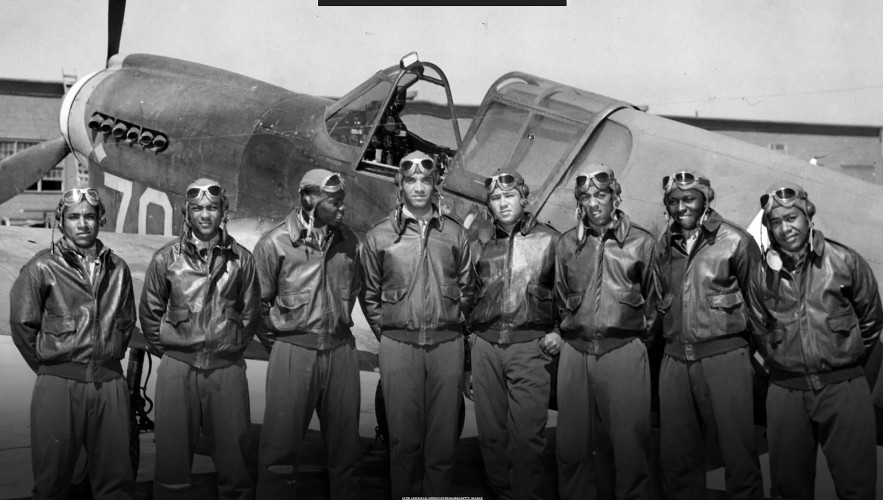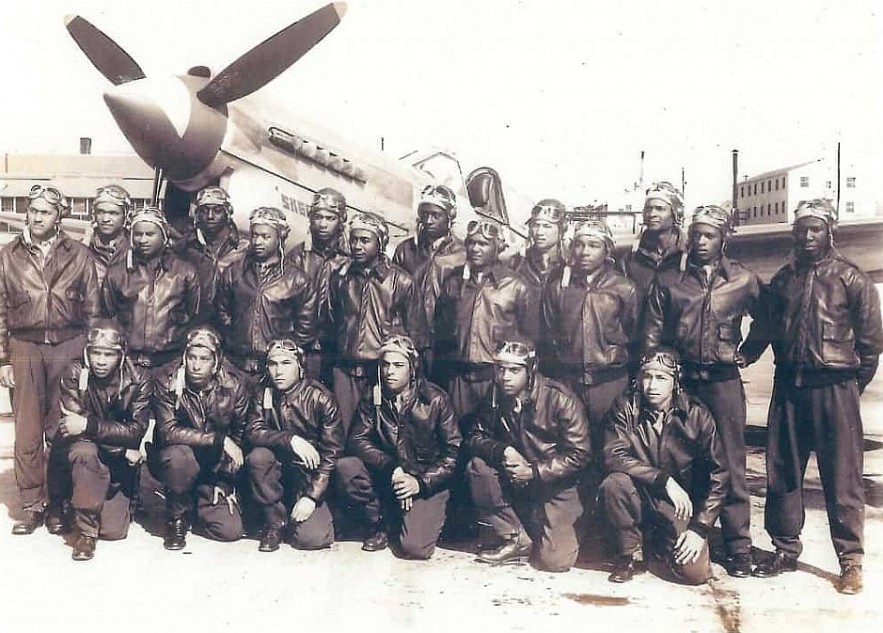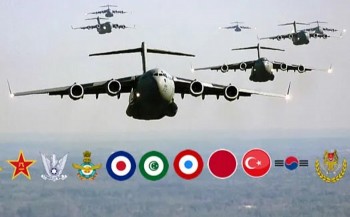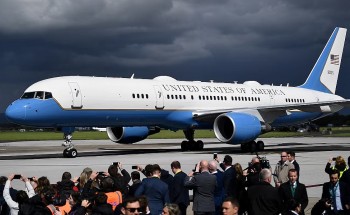Who Were The Tuskegee Airmen/‘Red Tails’? And Why Were They Removed By Trump?
Who Were The Tuskegee Airmen?
The Tuskegee Airmen were the first African-American military aviators in the United States Armed Forces, serving during World War II.
Their formation and service marked a significant milestone in both military and civil rights history, challenging prevailing racial prejudices and contributing to the eventual desegregation of the U.S. military.
 |
| The Tuskegee Airmen, famously known as the "Red Tails," "Red Tail Angels" |
Origins and Formation
Prior to World War II, the U.S. military was racially segregated, and African Americans were largely excluded from aviation roles. Persistent advocacy from civil rights organizations and leaders, including Walter White of the NAACP and labor leader A. Philip Randolph, led to the establishment of an all-Black pursuit squadron in 1941. The War Department selected Tuskegee Institute in Alabama for this initiative due to its existing aeronautical training facilities and favorable climate for year-round flying. This program became known as the "Tuskegee Experiment," aiming to assess the feasibility of training African Americans as military pilots.
The first squadron, the 99th Pursuit Squadron, was activated on March 22, 1941, at Chanute Field in Illinois, before relocating to Tuskegee Army Air Field in Alabama for flight training. The training program was rigorous, encompassing subjects such as meteorology, navigation, and instruments. The initial class began training on July 19, 1941, under the leadership of Captain Benjamin O. Davis Jr., who would later become the first African American general in the U.S. Air Force.
Training and Challenges
Training at Tuskegee was comprehensive and demanding. Cadets underwent primary flight instruction at Moton Field, followed by advanced training at Tuskegee Army Air Field. Despite the high standards, the program faced numerous challenges, including skepticism from military officials and societal prejudices.
The success of the program was significantly attributed to individuals like C. Alfred "Chief" Anderson, the chief civilian flight instructor, who played a pivotal role in developing the curriculum and mentoring the cadets.
Combat Deployment and Achievements
 |
| Tuskegee Airmen |
The 99th Fighter Squadron was deployed to North Africa in 1943, marking the first combat assignment for the Tuskegee Airmen.
They later participated in campaigns in Sicily and Italy, providing crucial air support and bomber escorts. In 1944, the 99th was integrated into the 332nd Fighter Group, which included the 100th, 301st, and 302nd Fighter Squadrons. The 332nd Fighter Group became renowned for its exceptional performance, particularly in bomber escort missions.
They earned the nickname "Red Tails" due to the distinctive red paint on the tails of their aircraft. The group's impressive record included one of the lowest bomber loss rates among escort groups, debunking myths about African Americans' capabilities in combat roles.
Legacy and Impact
 |
| Honoring the Legacy of the Tuskegee Airmen |
The Tuskegee Airmen's exemplary service had far-reaching implications. Their success challenged entrenched racial stereotypes and provided a compelling argument against segregation.
In 1948, President Harry S. Truman signed Executive Order 9981, mandating the desegregation of the U.S. armed forces, a decision influenced by the Airmen's distinguished record. The legacy of the Tuskegee Airmen extends beyond their wartime achievements; they paved the way for future generations of African Americans in the military and aviation sectors.
Their story has been commemorated in various forms, including the establishment of the Tuskegee Airmen National Historic Site at Moton Field, which serves to educate the public about their contributions and the challenges they overcame.
Recent Developments
In recent years, the Tuskegee Airmen have continued to be recognized for their contributions.
However, there have been instances where their legacy faced challenges. For example, in January 2025, the U.S. Air Force removed training courses featuring videos of the Tuskegee Airmen to comply with executive orders aimed at reducing diversity, equity, and inclusion initiatives.
This decision sparked discussions about how best to honor and integrate the history of the Tuskegee Airmen into military training and broader societal narratives.
The Tuskegee Airmen's story is a testament to courage, perseverance, and the relentless pursuit of equality. Their legacy continues to inspire and serves as a powerful reminder of the impact that dedicated individuals can have in challenging and transforming societal norms.
Conclusion
The Tuskegee Airmen's remarkable achievements in combat and their fight against systemic racism transformed not only the military but also American society. Their legacy serves as a beacon of hope and progress, inspiring future generations to pursue equality and excellence in every field. Recognizing their contributions remains essential to understanding the broader civil rights movement and the sacrifices made in the pursuit of justice.
FAQs
1. Who were the Tuskegee Airmen?
The Tuskegee Airmen were the first group of African-American military aviators in the U.S. Armed Forces during World War II. They flew missions in Europe, Africa, and the Mediterranean, breaking barriers in a racially segregated military.
2. Why are they called the "Red Tails"?
The Tuskegee Airmen earned the nickname "Red Tails" because their fighter planes were marked with distinctive red-painted tails to identify them during combat missions.
3. What impact did the Tuskegee Airmen have on civil rights?
Their success disproved racial stereotypes, paving the way for the desegregation of the U.S. military through Executive Order 9981 in 1948. They also inspired broader efforts for racial equality in the United States.
4. How did the Tuskegee Airmen perform in combat?
The Tuskegee Airmen excelled in their missions, particularly as bomber escorts. They maintained one of the lowest bomber loss rates among fighter groups and were highly respected for their skill and bravery.
5. Why was the history of the Tuskegee Airmen removed from Air Force training?
In compliance with executive orders targeting diversity, equity, and inclusion (DEI) initiatives, the U.S. Air Force removed the Tuskegee Airmen from training courses in 2025. This decision sparked debates about how their legacy should be honored.
6. Where can I learn more about the Tuskegee Airmen?
You can visit the Tuskegee Airmen National Historic Site in Alabama, explore educational resources from Tuskegee University, or view documentaries and books dedicated to their history and achievements.
 Top 10 Strongest Air Forces of the World in 2023 Top 10 Strongest Air Forces of the World in 2023 The World Directory of Modern Military Aircraft (WDMMA) website ranks the Indian Air Force as the 3rd strongest globally in 2023, higher than China. Chinese ... |
 What is A New Air Force One Jet for President-elect Donald Trump What is A New Air Force One Jet for President-elect Donald Trump President-elect Donald Trump's aspirations to board a brand-new Air Force One aircraft are being harmed by Boeing's delivery delays. |
 Kwanzaa Festivals: Celebrating African American Culture and Heritage Kwanzaa Festivals: Celebrating African American Culture and Heritage KnowInsiders explores every aspect of Kwanzaa celebrations, from its origins and significance to the activities and events that make it special. |























